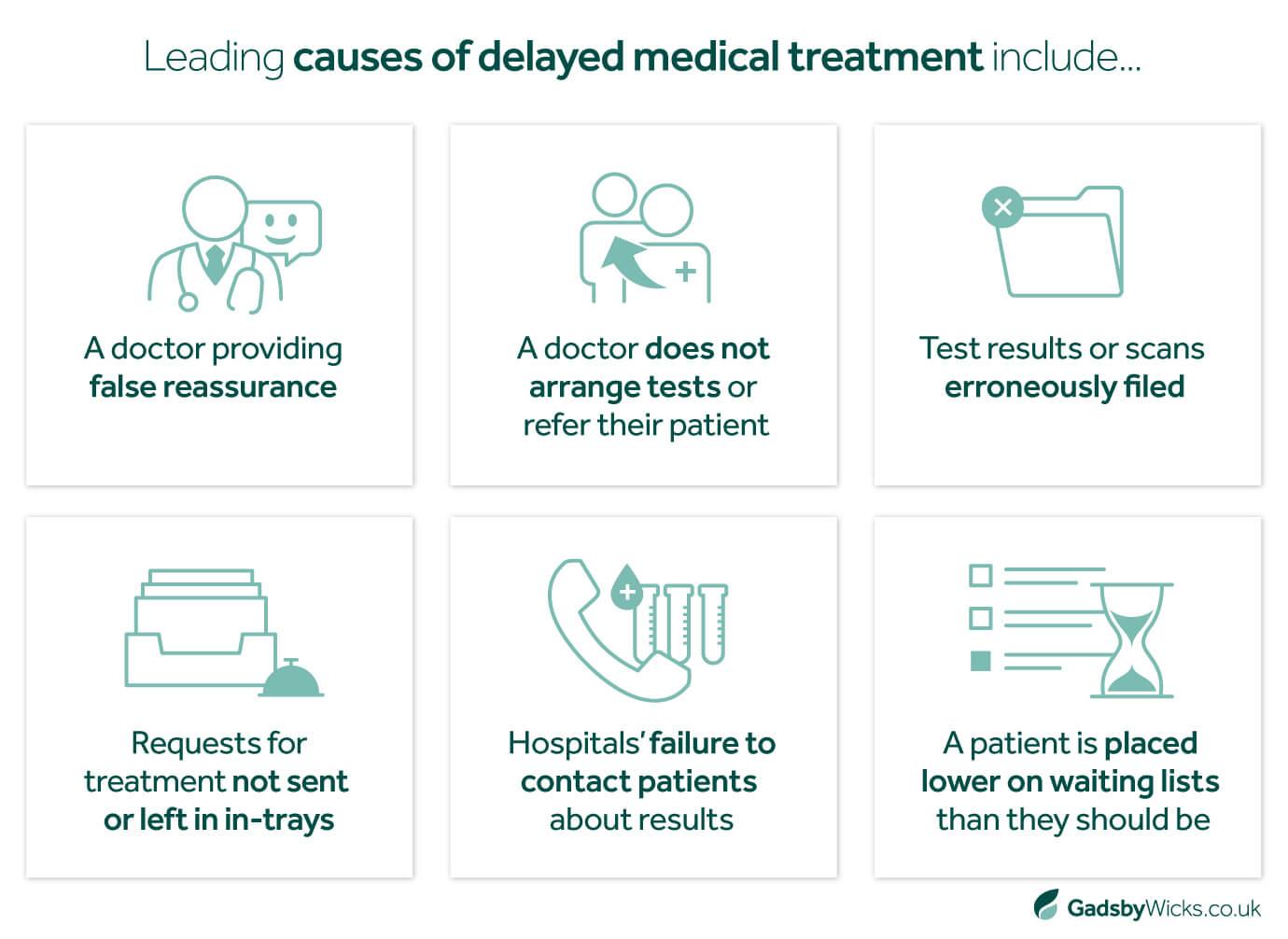Proving Harm Due to Delayed Treatment isn’t just about medical records; it’s about meticulously piecing together a compelling narrative of causation and consequence. This involves demonstrating a direct link between the delay and the resulting harm, whether physical, psychological, or financial. We’ll explore the legal and ethical complexities, the types of evidence needed, and the methods for quantifying the damage, ultimately aiming to provide a clear and effective strategy for building a robust case.
This process demands a deep understanding of medical terminology, legal precedent, and persuasive argumentation. We’ll dissect the challenges inherent in proving causation, especially when multiple factors contribute to a patient’s condition. From establishing a clear definition of “harm” to effectively quantifying damages, we’ll equip you with the knowledge and strategies to navigate this intricate landscape successfully. The ultimate goal? To ensure that those harmed by delayed medical treatment receive the justice and compensation they deserve.
Proving harm from delayed treatment requires meticulous documentation. This often involves demonstrating a direct causal link between the delay and worsened condition. If that delay stems from a prescription error, understanding your next steps is crucial; check out this guide on What to Do When Prescription Errors Cause Complications to learn how to navigate the complexities of medical malpractice.
Ultimately, establishing the severity of the harm caused by the delayed treatment is key to a successful claim.
Defining Harm in Delayed Treatment: Proving Harm Due To Delayed Treatment

Proving harm due to delayed medical treatment requires a clear understanding of what constitutes “harm” and how to establish a causal link between the delay and the negative consequences. This involves examining the physical, psychological, and economic impacts, and considering the spectrum of harm from minor setbacks to irreversible damage. Let’s delve into the specifics.
Proving harm from delayed treatment requires demonstrating a direct causal link between the delay and the worsened outcome. This is especially crucial in overdose cases, where timely intervention is vital. For comprehensive legal guidance on navigating these complex situations, explore resources like Legal Support for Overdose Cases Due to Negligence to understand your rights. Ultimately, establishing negligence hinges on proving the delayed treatment directly contributed to the patient’s harm.
Defining Harm: Physical, Psychological, and Economic Aspects
Harm resulting from delayed treatment encompasses a wide range of negative consequences. Physically, this can manifest as worsened disease progression, increased severity of symptoms, the need for more extensive or invasive procedures, increased risk of complications, or permanent disability. Psychologically, delayed treatment can lead to increased anxiety, depression, fear, and reduced quality of life. Economically, the consequences can include lost wages, increased medical expenses, and the need for long-term care.
Proving harm from delayed treatment requires meticulous documentation. A key aspect involves identifying the root cause of the delay, which might include, for example, Common Prescription Errors and How to Claim Compensation , leading to worsened conditions. Ultimately, establishing a direct causal link between the delayed treatment and the resulting harm is crucial for a successful claim.
The severity of harm is influenced by various factors, including the nature of the condition (e.g., a rapidly progressing cancer versus a slowly developing osteoarthritis), the patient’s overall health (e.g., pre-existing conditions that might exacerbate the impact of delayed treatment), and the duration of the delay. A short delay in treating a minor ailment might have minimal impact, whereas a significant delay in treating a life-threatening condition can have devastating consequences.
Establishing Causation: Linking Delay to Harm

Establishing a direct causal link between delayed treatment and resulting harm is crucial in proving liability. This requires demonstrating that the delay directly contributed to the negative outcome and that this outcome would have been avoided or mitigated with timely treatment. This can be challenging, especially when multiple factors contribute to the patient’s condition.
A strong framework for presenting evidence involves detailing the patient’s condition, the standard of care (what a reasonably competent medical professional would have done), the deviation from the standard of care (the delay), and the resulting harm. Expert medical testimony plays a critical role in establishing this causal link, analyzing medical records, and explaining the connection between the delay and the patient’s outcome.
Types of Evidence to Support Claims of Harm
Several types of evidence can support claims of harm due to delayed treatment. The strength of each evidence type varies, and a combination is often necessary to build a compelling case. Let’s examine some key evidence types and their relative strengths and weaknesses.
| Evidence Type | Source | Strength | Limitations |
|---|---|---|---|
| Medical Records | Patient’s medical files | Objective documentation of the patient’s condition, treatment timeline, and progression of the disease | May be incomplete or lack crucial details; interpretation may be subjective |
| Expert Testimony | Medical professionals | Provides expert opinion on the standard of care, the causal link between delay and harm, and the assessment of damages | Can be expensive and subject to bias; credibility can be challenged |
| Statistical Data | Epidemiological studies, clinical trials | Provides population-level evidence on the impact of delayed treatment on specific conditions | May not be directly applicable to individual cases; statistical significance doesn’t always equate to clinical significance |
| Patient Testimony | Patient’s account | Provides a personal perspective on the impact of the delay and the resulting suffering | Subjective; can be influenced by emotion and memory biases |
Quantifying the Harm: Assessing Damages
Quantifying the harm involves assessing both the physical and economic consequences of the delayed treatment. This includes calculating medical expenses (past and future), lost wages, pain and suffering, and the cost of long-term care. Expert witnesses, often economists and medical professionals, play a crucial role in estimating the value of these damages. They use various methods, such as comparing the patient’s condition to similar cases and considering factors such as life expectancy and the impact on quality of life.
Illustrating the Impact of Delayed Treatment

Consider a hypothetical case of a patient with a rapidly progressing lung cancer. Early detection and timely treatment, within the standard of care, could have resulted in a 70% chance of five-year survival and a good quality of life. However, due to a six-month delay in diagnosis and treatment, the cancer progressed significantly, reducing the survival chance to 20% and significantly impacting the patient’s quality of life, resulting in extensive and debilitating treatment and significant pain and suffering.
Textual Timeline:
Proving harm from delayed treatment requires meticulous documentation. This often involves demonstrating a direct causal link between the delay and worsened condition, a process significantly complicated by medication errors. Understanding your rights if wrong prescriptions caused your injuries is crucial; learn more by checking out this resource on Your Rights When Wrong Prescriptions Lead to Serious Injuries.
Ultimately, establishing the severity of harm resulting from delayed care is key to a successful claim.
Timely Treatment: Month 1: Diagnosis; Month 2-6: Treatment; Month 7-60: Monitoring and recovery. Outcome: 70% chance of five-year survival, good quality of life.
Delayed Treatment: Month 1-7: Delay in diagnosis; Month 7: Diagnosis; Month 8-18: Aggressive treatment; Month 19-60: Extensive rehabilitation and palliative care. Outcome: 20% chance of five-year survival, significantly reduced quality of life.
Legal and Ethical Considerations, Proving Harm Due to Delayed Treatment
Proving harm due to delayed treatment involves navigating complex legal and ethical considerations. Legal standards for proving negligence vary across jurisdictions, but generally require demonstrating a breach of the standard of care, causation, and damages. Ethical considerations include ensuring fairness and transparency in assessing damages, avoiding conflicts of interest, and respecting patient autonomy.
- Legal Precedents: Landmark cases in medical malpractice often establish legal standards and principles relevant to proving harm from delayed treatment. These cases provide guidance on what constitutes sufficient evidence to establish a causal link and what types of damages are compensable.
- Ethical Guidelines: Medical professional organizations and ethical review boards provide guidelines on appropriate medical care, including standards for timely diagnosis and treatment. These guidelines help establish the standard of care against which the actions of healthcare providers are evaluated.
Successfully proving harm due to delayed treatment requires a multi-faceted approach. It’s not merely about presenting evidence; it’s about weaving a compelling narrative that connects the delay directly to the patient’s suffering and quantifiable losses. By understanding the legal frameworks, assembling the right evidence, and effectively communicating the impact of the delay, you can significantly increase your chances of a successful outcome. Remember, meticulous preparation and a strategic approach are key to achieving justice in these complex cases.
Common Queries
What if the delay wasn’t the sole cause of the harm?
Even if other factors contributed, you can still build a case by demonstrating that the delay significantly worsened the outcome. Expert testimony is crucial here to establish the extent of the delay’s impact.
How long do I have to file a claim for delayed treatment?
Proving harm from delayed treatment requires meticulous documentation of the delay’s impact on the patient’s health. This often involves demonstrating a direct causal link between the delay and worsened condition, a process significantly aided by understanding the legal aspects of medical negligence, as detailed in this comprehensive guide on How to Handle a Medication Error Case. Ultimately, successful claims hinge on clearly establishing the severity of the harm directly resulting from the delayed treatment.
Statutes of limitations vary significantly by jurisdiction and the type of claim. Seek legal counsel immediately to understand the applicable deadlines in your area.
What types of damages can I claim?
Damages can include medical expenses, lost wages, pain and suffering, emotional distress, and potentially punitive damages depending on the circumstances and jurisdiction.
Can I sue the hospital or the individual doctor?
Liability can depend on the specifics of the case and the roles of different parties involved. Legal counsel can help determine the appropriate defendants.


